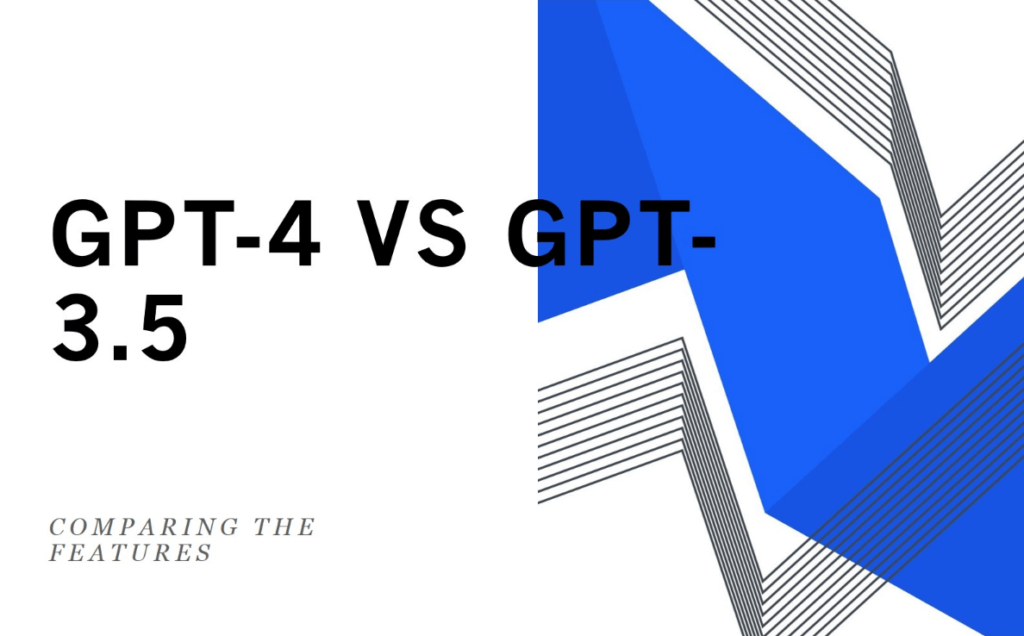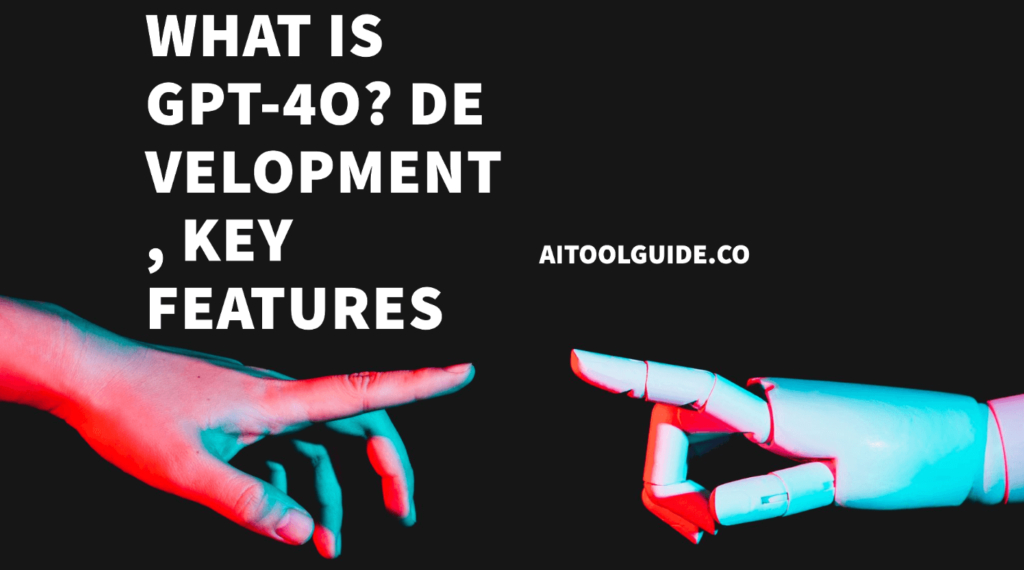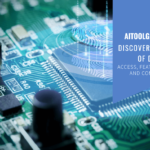GPT-4o, also known as GPT-4 Omni, is the latest flagship model from OpenAI, designed to process and generate text, audio, and visual inputs and outputs within a single framework. The “o” in GPT-4o stands for “omni,” reflecting its comprehensive multimodal capabilities.
This model represents a significant evolution from its predecessors by integrating multiple data types, enhancing its versatility and performance.
GPT-4o can understand and respond to prompts that include any combination of text, audio, and images, making it a more natural and intuitive tool for human-computer interaction.
In this article, we will explore GPT-4o’s development, technical specifications, key features, and wide-ranging applications, as well as its impact on AI and future prospects.
6 Key Features of GPT-4o
GPT-4o introduces several groundbreaking features and capabilities that set it apart from its predecessors:
1. Multimodal Integration:
The ability to process and generate text, audio, and images within a single model allows for more natural and versatile interactions.
Users can engage with GPT-4o using any combination of these data types, making it suitable for a wide range of applications from real-time translation to interactive storytelling.
2. Enhanced Vision Capabilities:
GPT-4o’s vision capabilities enable it to understand and respond to visual inputs effectively. This includes describing images, analyzing visual content, and generating text based on visual data, which opens up new possibilities for accessibility and data analysis.
3. Real-Time Interaction:
With an average response time of 320 milliseconds for audio inputs, GPT-4o facilitates real-time conversations that feel more natural and fluid.
This capability is particularly useful for applications like customer service, where quick and accurate responses are crucial.
4. Multilingual Support:
Supporting over 50 languages, GPT-4o excels in processing and generating text in multiple languages, including those with non-Latin scripts. This feature enhances its utility in global communication and real-time translation scenarios.
5. Cost and Efficiency:
GPT-4o is designed to be more cost-effective, offering faster performance at a lower cost compared to its predecessors.
This makes it an attractive option for developers and enterprises looking to integrate advanced AI capabilities without incurring high costs.
6. User-Friendly Interface:
The model comes with a revamped user interface that is cleaner and more intuitive, making it easier for users to interact with the AI and leverage its advanced features.
Development and Release of ChatGPT-4o
GPT-4o, also known as GPT-4 Omni, was officially announced by OpenAI’s CTO, Mira Murati, during a live-streamed demo on May 13, 2024, and released the same day.
The development of GPT-4o involved contributions from various key teams and individuals at OpenAI, including pre-training leads like Aidan Clark and Alex Paino, and post-training leads like Liam Fedus and Luke Metz.
The project also benefited from partnerships with companies like Microsoft, which provided infrastructure support through Microsoft Azure.
The release of GPT-4o marks a significant milestone in AI, integrating text, audio, and visual processing into a single, cost-efficient model, enhancing its versatility and accessibility.
Technical Specifications of GPT-4o
GPT-4o represents a significant advancement in AI model architecture and capabilities.
While the exact number of parameters is not publicly disclosed, it is believed to be substantially larger than its predecessor, GPT-4, which was estimated to have around 1 trillion parameters.
The model’s architecture is based on an enhanced version of the Transformer, allowing for more efficient processing and improved contextual understanding.
The training methodology for GPT-4o involves a multimodal approach, incorporating text, audio, and visual data into a single, unified model.
This end-to-end training allows GPT-4o to process and generate content across these modalities seamlessly.
The training data includes a vast corpus of text from the internet, books, and other sources, as well as a diverse range of audio and visual inputs.
The data cutoff for GPT-4o is reported to be up to October 2023, ensuring relatively up-to-date information.GPT-4o’s multimodal capabilities are a standout feature.
It can process and generate text, understand and analyze images, and handle audio inputs and outputs within a single model framework.
This integration allows for more natural and versatile interactions, enabling tasks like real-time voice-to-voice conversations, image analysis, and multimodal content generation.
Performance-wise, GPT-4o shows impressive benchmarks. It matches or surpasses GPT-4 on English text and code tasks while outperforming it on non-English language, vision, and audio benchmarks.
The model demonstrates state-of-the-art performance in speech recognition and translation, setting new records in these areas.
Its audio processing capabilities are particularly noteworthy, with an average response time of 320 milliseconds for audio inputs, comparable to human conversation speeds.GPT-4o also boasts significant improvements in efficiency and cost-effectiveness.
It is reported to be twice as fast and 50% cheaper than the GPT-4 Turbo, making it more accessible for a wider range of applications.
The model supports a context window of 128,000 tokens, allowing for the processing of very long inputs and maintaining context over extended interactions.
In terms of language support, GPT-4o handles over 50 languages, including non-Latin scripts, with enhanced performance in multilingual tasks.
Its vision capabilities have also been significantly improved, achieving state-of-the-art results on various visual understanding benchmarks.
Advanced Key Features and Improvements

1. Enhanced Reasoning Capabilities
GPT-4o exhibits significant advancements in reasoning tasks, outperforming its predecessors and other models on various benchmarks.
It excels in complex problem-solving scenarios, such as calendar calculations, time and angle computations, and logical puzzles.
The model’s enhanced reasoning capabilities make it highly effective for applications requiring sophisticated analytical skills, such as financial modeling, legal analysis, and scientific research.
2. Improved Accuracy and Reduced Hallucinations
In GPT-4o, one of the most important improvements is the reduced tendency to generate hallucinations. This enhancement is achieved through refined training methodologies and advanced safety protocols.
The model is designed to minimize errors and provide more accurate and reliable outputs, making it a dependable tool for critical applications like medical diagnostics, legal documentation, and academic research.
3. Better Alignment with User Intentions
GPT-4o is better aligned with user intentions, thanks to improved contextual understanding and responsiveness. The model can interpret and respond to user inputs more accurately, maintaining coherence over extended interactions.
This alignment is particularly beneficial for customer service applications, where understanding and addressing user queries accurately is crucial.
The model’s ability to remember previous interactions and maintain context enhances its effectiveness in providing personalized and relevant responses.
4. Multilingual Support
GPT-4o supports over 50 languages, including non-Latin scripts, significantly improving its utility in global communication.
The model’s multilingual capabilities extend to real-time translation, making it an invaluable tool for international business, travel, and cross-cultural communication.
It can seamlessly switch between languages during conversations, ensuring smooth and coherent interactions regardless of the language used.
5. Vision Capabilities and Their Applications
GPT-4o’s vision capabilities are a standout feature, allowing it to process and generate visual content effectively. The model can analyze and describe images, perform object recognition, and generate visual content based on textual descriptions.
These capabilities open up new possibilities in fields like accessibility, where the model can assist visually impaired individuals by describing their surroundings.
In marketing and design, GPT-4o can create custom visual content, enhancing creativity and efficiency. Additionally, its ability to understand and analyze visual data makes it a powerful tool for data visualization and analysis.
Best Use Cases or Applications of GPT-4o
1. Content Creation (Articles, Emails, Books)
GPT-4o excels in content creation, generating high-quality text for various purposes, including articles, emails, and books.
Its advanced language understanding and generation capabilities allow it to produce coherent and contextually appropriate content.
This makes it an invaluable tool for writers, marketers, and businesses looking to automate content creation while maintaining high standards of quality and relevance.
2. Website Building
GPT-4o can significantly streamline the website-building process. By integrating with web development platforms, it can generate code, design elements, and even entire web pages based on user specifications.
This capability reduces the time and effort required to build and maintain websites, making it accessible for individuals and small businesses without extensive technical expertise.
3. AI-Assisted Tutoring
In the educational sector, GPT-4o serves as an AI-assisted tutor, providing personalized learning experiences. It can answer questions, explain complex concepts, and offer practice problems across various subjects.
Its ability to understand and generate text, audio, and visual content makes it an effective tool for interactive and engaging learning, catering to different learning styles and needs.
4. Object Identification for Visually Impaired Individuals
GPT-4o’s vision capabilities are particularly beneficial for visually impaired individuals.
The model can analyze and describe images and objects in real time, providing audio descriptions that help users navigate their environment and understand visual content.
This application enhances accessibility and independence for visually impaired users, making everyday tasks more manageable.
5. Legal Research Tools
GPT-4o is a powerful tool for legal research, capable of analyzing vast amounts of legal texts, case laws, and statutes.
It can summarize documents, extract relevant information, and provide insights based on legal precedents. This capability helps legal professionals save time and improve the accuracy of their research, allowing them to focus on higher-level analytical tasks.
5. Data Analysis and Summarization
In the realm of data analysis, GPT-4o can process and interpret complex datasets, generating summaries and visualizations.
Its ability to understand and analyze both numerical and textual data makes it a versatile tool for businesses and researchers.
It can identify trends, generate reports, and provide actionable insights, facilitating data-driven decision-making and enhancing productivity.
Access and Availability of GPT-4o
Subscription Models
GPT-4o is available through various subscription models tailored to different user needs. TheChatGPT Plus plan costs $20 per month and offers enhanced access and faster response times compared to the free tier.
The Team plan is priced at $25 per user per month when billed annually, or $30 per user per month when billed monthly, providing higher usage limits and additional features suitable for collaborative environments.
For larger organizations, the Enterprise Plan offers unlimited access and advanced features, with pricing available upon request.
API Access and Pricing
Developers can access GPT-4o through OpenAI’s API, which is priced at $5.00 per million input tokens and $15.00 per million output tokens.
This flexible pricing model allows businesses to pay only for what they use, making it cost-effective for various applications. Additionally, the GPT-4o mini model, which is more cost-efficient, is available at $0.15 per million tokens.
Platforms Offering Free Access
Several platforms offer free access to GPT-4o. Microsoft Bing Chat integrates GPT-4o, allowing users to interact with the model via the Bing search engine. Additionally, Microsoft’s Copilot feature in Office applications provides another avenue for free access.
Hugging Face also offers limited free access to GPT-4o through its platform, enabling users to experiment with the model without a subscription.
Differences Between GPT-4o and GPT-4 Turbo
GPT-4o and GPT-4 Turbo share some similarities, such as a 128,000-token context window and advanced multimodal capabilities.
However, GPT-4o is designed to be more cost-effective, being roughly 50% cheaper than GPT-4 Turbo for both input and output tokens.
GPT-4o also offers improved speed, being twice as fast as GPT-4 Turbo, and enhanced vision capabilities, making it a more versatile and efficient model for various applications.
User Experience and Feedback
Since its release, GPT-4o has received mixed feedback from users. Initial reception highlights its impressive speed and multimodal capabilities, making it particularly effective for tasks involving text, audio, and visual inputs.
Users appreciate its ability to handle complex reasoning and maintain context over extended interactions, which enhances its utility in customer service and educational applications.
Common use cases include content creation, real-time translation, and interactive tutoring, with success stories often citing its efficiency and versatility in these areas.
However, challenges and limitations have been reported, particularly concerning its performance in programming tasks.
Users have noted that GPT-4o sometimes generates incorrect or repetitive code, which can be frustrating for developers.
Additionally, while it excels in vision-related tasks, some users find its text-based outputs less detailed compared to GPT-4.
Comparisons with other AI models like Google Bard and Meta LLaMA reveal that while GPT-4o offers superior multimodal integration, it may lag in specific areas such as coding accuracy and detailed text generation.
Ethical Considerations and Safety
OpenAI has implemented several measures to ensure the ethical use and safety of GPT-4o. These include robust guardrails and content moderation systems to prevent misuse, such as generating misinformation or deepfakes.
The model undergoes extensive filtering of training data and post-training adjustments to refine its behavior and reduce biases.
OpenAI has also engaged over 70 external experts in fields like social psychology and misinformation to identify and mitigate risks.
Transparency and data privacy are prioritized, with strict policies governing data collection and usage. Future plans for improving safety include continuous risk assessment and the development of more advanced safety protocols to address emerging threats and ethical concerns.
Comparison with Previous Models (GPT-4, GPT-3.5)

GPT-4o builds upon the foundations laid by earlier models like GPT-4 and GPT-3.5, introducing several key improvements:
1. Multimodal Capabilities:
Unlike GPT-4 and GPT-3.5, which primarily focused on text and required separate models for audio and visual processing, GPT-4o integrates these modalities into a single model. This allows it to handle text, audio, and image inputs and outputs seamlessly.
2. Performance and Speed:
GPT-4o offers significantly faster response times, with an average of 320 milliseconds for audio inputs, which is comparable to human conversation speeds.
This is a substantial improvement over the previous models, which had longer latency due to the need for multiple models to process different types of data.
3. Cost Efficiency:
GPT-4o is designed to be more cost-effective, being twice as fast and 50% cheaper than GPT-4 Turbo. This makes it more accessible for a broader range of applications and users.
4. Language Support:
GPT-4o supports over 50 languages, including non-Latin scripts, and offers better performance in multilingual tasks compared to GPT-4 and GPT-3.5. This makes it a powerful tool for global communication and translation tasks.
5. Vision and Audio Understanding:
GPT-4o excels in vision and audio benchmarks, setting new records in speech recognition and translation. It can natively support voice-to-voice interactions, which was not possible with GPT-4 and GPT -3.5.
Future Prospects and Developments
Upcoming Updates and Features
OpenAI plans to introduce new capabilities to GPT-4o, including real-time voice conversations and video interactions. Users will soon be able to show live footage, such as a sports game, and ask the model to explain the rules.
These updates aim to make interactions more natural and versatile, enhancing user experience across various applications.
Research and Development in Progress
Ongoing research focuses on improving multimodal integration, safety, and efficiency. OpenAI is also working on expanding the model’s capabilities to handle more complex tasks and better understand user intentions.
This includes refining its ability to process and generate video content, which is expected to be a significant advancement.
Predictions for the Next Iteration (GPT-5)
GPT-5 is anticipated to build on GPT-4o’s multimodal capabilities, incorporating advanced video processing and further enhancing reasoning abilities.
It is expected to have a larger parameter size, potentially around 1.5 trillion parameters, offering unprecedented performance and accuracy.
Predictions also suggest improvements in safety measures and alignment with user intentions, making the model more reliable and versatile.
Long-Term Vision for Artificial General Intelligence (AGI)
OpenAI’s long-term vision involves developing AGI that can perform any intellectual task that a human can. The goal is to ensure AGI benefits all of humanity, promoting fair access and mitigating risks associated with its deployment.
This includes a gradual introduction of increasingly powerful models, allowing society to adapt and co-evolve with the technology. OpenAI emphasizes the importance of transparency, collaboration, and responsible governance in achieving this vision.
FAQs
What are the limitations of GPT-4o?
Like other language models, GPT-4o still has limitations such as the potential for generating biased, inaccurate, or inappropriate content.
It also lacks true understanding, the ability to learn from new data post-training, and awareness of events after 2021.
Can GPT-4o be used for specific tasks like code generation or creative writing?
Yes, GPT-4o can be used for a wide range of tasks including code generation, programming-related tasks, poetry, and creative writing. Providing clear instructions and context is key to getting the desired results.
How can I access GPT-4o?
GPT-4o is available to anyone with an OpenAI API account and can be used in the Chat Completions API, Assistants API, and Batch API. ChatGPT Plus, Team, and Enterprise subscribers also have access to GPT-4o on chatgpt.com with varying usage caps.
What are some applications built with GPT-4o?
Organizations have collaborated with OpenAI to build innovative products powered by GPT-4o, such as Duolingo for deeper conversations, Be My Eyes for visual accessibility, Stripe for streamlined user experience and fraud prevention, and more.
How much does it cost to use GPT-4o?
The cost depends on the OpenAI pricing plan. For API usage, GPT-4o is priced at $5/M input tokens and $15/M output tokens, which is 50% cheaper than GPT-4.
ChatGPT Plus and Team plans offer a certain number of GPT-4o messages every 3 hours, while ChatGPT Enterprise provides unlimited high-speed access.
How does GPT-4o handle multimodal inputs?
GPT-4o is designed to process and integrate information from multiple modalities, including text, audio, and visual inputs.
It can understand and analyze images, videos, spoken language, and written text simultaneously, allowing for more natural and comprehensive interactions.
This multimodal capability enables GPT-4o to engage in tasks such as real-time translation, audio content analysis, and image understanding.
What are the audio capabilities of GPT-4o?
GPT-4o demonstrates impressive audio capabilities, including the ability to ingest and generate audio files. It can control various aspects of generated voice, such as speed, tone, and even singing on demand.
GPT-4o can also understand and provide feedback on input audio, such as offering tone feedback for language learning or assessing breathing exercises.
According to OpenAI’s benchmarks, GPT-4o outperforms previous state-of-the-art models in automatic speech recognition (ASR) and audio translation.
How does GPT-4o handle image generation and visual understanding?
GPT-4o exhibits powerful image generation abilities, including one-shot reference-based image generation and accurate text depictions.
It can maintain specific words and transform them into alternative visual designs, demonstrating an advanced level of visual creativity.
In terms of visual understanding, GPT-4o achieves state-of-the-art performance across several benchmarks, surpassing previous models like GPT-4T, Gemini, and Claude.
What are some potential enterprise applications for GPT-4o?
GPT-4o’s enhanced capabilities make it suitable for various enterprise applications. Its multimodal integration and improved performance allow it to be used in complex workflows where open-source models or fine-tuned models may not be available.
GPT-4o can be incorporated into enterprise application pipelines for tasks that don’t require fine-tuning on custom data.
It can be used alongside custom models to augment knowledge or decrease costs in specific steps of an application.
This versatility enables rapid prototyping of complex workflows and expands the range of use cases that can be addressed with AI in enterprise settings.
What are some innovative applications built using GPT-4o?
Several organizations have collaborated with OpenAI to create innovative products powered by GPT-4o. These include Duolingo for deeper conversations, Be My Eyes for visual accessibility, Stripe for streamlined user experience and fraud prevention, and more.
How does GPT-4o handle data privacy and compliance?
As with the rest of OpenAI’s platform, data and files passed to the GPT-4o API are never used to train models unless users explicitly opt into training. OpenAI has established data retention and compliance standards to ensure user privacy and security.
Conclusion
The GPT-4o represents a significant leap in AI technology, with its multimodal capability, enhanced reasoning, and improved accuracy. From content creation and website building to AI-assisted tutoring and legal research, this technology has huge potential.
However, its cost-effectiveness and versatility make it a valuable tool, despite some inaccuracies in coding. In the upcoming updates and in the GPT-5, AI capabilities are going to be pushed further.
As OpenAI prioritizes safety and ethics, GPT-4o lays the groundwork for a future where AI enhances human creativity and productivity.
- Guide to Connect Claude AI with Google Sheets in 2024 - October 11, 2024
- What is DreamGF? Honest review by Expert - October 9, 2024
- How to Use Claude AI in 2024? - October 7, 2024






